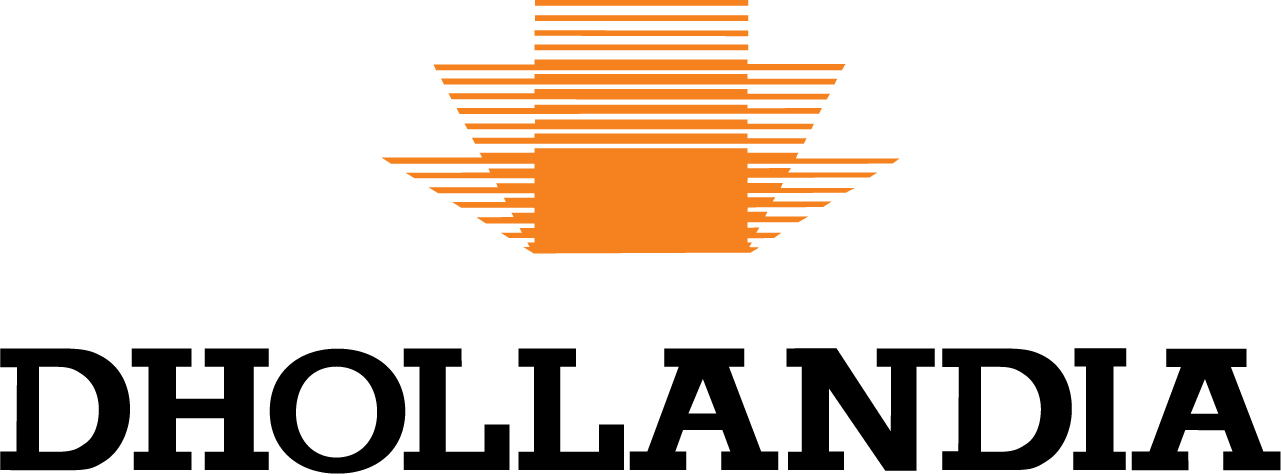
Ensuring Safe Operation of Column Lifts in Commercial Vehicles
Ensuring the safe operation of a column lift in commercial vehicles is a critical aspect of fleet management in South Africa. From urban delivery vans to long-haul trucks, these lifts enable safe and efficient loading and unloading, but they also carry inherent risks if improperly installed, maintained, or operated. By understanding international standards, national regulations, and industry best practices, fleet managers can safeguard both their operators and assets while maintaining regulatory compliance.
Column lifts are integral not just for operational efficiency but for protecting workers from injury and avoiding costly downtime. South African operators face unique challenges, such as rough terrain, high ambient temperatures, and diverse cargo types, which means adhering to standards and following structured safety protocols is essential for sustainable and risk-free operations.
International Safety Standards
International safety standards provide the framework for safe design, operation, and inspection of column lifts. While some standards are not specific to vehicle-mounted lifts, they establish principles that ensure the safety and reliability of lifting equipment. These standards are widely adopted across the globe and form a basis for national regulations in South Africa.
- ISO 3691‑5: Covers industrial trucks, focusing on hazard identification, operator protection, and verification of safety measures.
- EN 1756‑1: Applicable to tail lifts and vehicle-mounted platforms, requiring emergency lowering devices, interlocks, anti-slip surfaces, and safe working load markings.
- Verification and compliance: Manufacturers must prove structural integrity, safety mechanisms, and hazard prevention measures through rigorous testing.
- Operational safety instructions: Clear marking of SWL, instructions for safe operation, and warning signage are mandatory.
Applying these standards to column lifts ensures that all critical components, from hydraulic systems to safety interlocks, are designed and verified for safe use. Expert commentary suggests that adherence to ISO and EN standards reduces workplace incidents and ensures operators understand safe limits and emergency procedures. South African fleets adopting these frameworks report fewer maintenance-related disruptions and improved operational efficiency.
By integrating these standards into procurement and daily operation, fleet managers can align international engineering best practices with South African safety regulations. Even when using locally manufactured column lifts, referencing these global standards ensures the design meets rigorous safety and performance expectations.
National Regulations in South Africa
South Africa regulates lifting equipment through the Occupational Health and Safety Act 85 of 1993 (OHSA) and the Driven Machinery Regulations 2015 (DMR). Regulation 18 mandates that all lifting machines, including column lifts, must be designed to recognised technical standards, marked with the maximum load, equipped with safety devices, and examined at installation and at regular intervals thereafter.
The national Code of Practice for Training Providers of Lifting Machine Operators ensures operators are competent and certified. Fleets are required to keep a detailed register of examinations, load tests, and training certifications. These regulations create a framework that directly supports the safe deployment and operation of column lifts in commercial vehicles.
Load Capacity Compliance
Adhering to proper load capacity is essential for the safe operation of a column lift. Incorrect loading can result in accidents, mechanical failure, and financial losses. In South Africa, commercial vehicle lifts are commonly rated from 750 kg to 3 000 kg, and maintaining a safety margin is essential for both operator safety and equipment longevity.
- Safe working load (SWL) marking: Clearly visible on the platform.
- Structural safety factors: Chains, ropes, and hydraulic systems must meet engineering safety margins.
- Overload prevention: Operators must follow manufacturer guidelines and never exceed capacity.
- Load-centre management: Ensures weight is distributed evenly to maintain stability.
Industry data shows that fleets operating within 80–90% of SWL experience significantly fewer incidents than those consistently near maximum capacity. Proper monitoring, load‑documentation, and operator training reduce risk while extending the lifespan of the lift.
Regular checks and strict adherence to load limits also help with insurance compliance and reduce potential legal exposure. South African fleet managers benefit from implementing standard operating procedures around SWL monitoring, audits, and operator training.
Operator Safety Protocols
Operators play a central role in the safe use of column lifts. Even the best-engineered equipment can pose serious risks if not handled correctly.
Operators in South Africa must be formally trained and hold a certificate of competence, as per national guidelines. Daily checks of the platform, interlocks, load position, and surrounding area ensure the lift is safe to use. Emergency lowering mechanisms must be functional, and operators should follow all procedures for positioning the vehicle and securing the load.
Personal protective equipment is mandatory, including anti-slip footwear, gloves, and high-visibility clothing. Operators should also complete checklists and maintain logs for pre-use inspections, providing documented evidence of safe operation practices. Embedding these protocols reduces injuries, promotes safety culture, and ensures compliance with national legislation.
Maintenance and Inspection Standards
Routine maintenance and inspections are crucial for a column lift’s safe and reliable operation. South African legislation requires that lifts be examined at installation and annually thereafter, with shorter intervals for higher-risk applications.
- Thorough examinations: At installation and annually or as dictated by risk assessment.
- Component inspections: Hydraulic systems, safety locks, welds, ropes/chains, and anti-slip surfaces.
- Load testing: Platforms should be tested to 100–110% of SWL to ensure structural integrity.
- Maintenance records: Comprehensive logs documenting inspections, repairs, and replacements.
Fleet managers maintaining detailed maintenance logs report fewer mechanical failures and extended lift service life. Preventive maintenance allows for early identification of hazards, which reduces accidents and downtime.
By adopting a structured maintenance programme, South African fleets ensure compliance, improve reliability, and provide documented proof of safety diligence. Regular maintenance, combined with operator training, forms the backbone of a safe column lift operation.
Safety Features and Mechanisms
Modern column lifts include multiple safety features designed to prevent accidents:
- Anti-slip surfaces for operators and loads
- Safety locks and mechanical restraints
- Emergency lowering systems
- Audible and visual warning signals
- Interlocks to prevent operation under unsafe conditions
- Clear SWL and load-centre markings
Regular verification of these features, combined with operator training, ensures column lifts function safely in real-world operations. In South Africa’s diverse environmental conditions, these mechanisms protect both the operator and the cargo from preventable incidents.
Incident Reporting and Liability
South African employers are legally obliged to report incidents under OHSA and maintain full documentation of any lift-related accidents. Proper records of training, maintenance, and inspections are crucial for liability management.
Insurance coverage often depends on documented adherence to safety protocols. Fleet audits, incident logs, and maintenance registers serve as evidence of due diligence. By proactively managing these obligations, operators reduce both safety risks and potential financial exposure.
Certification and Testing Procedures
Before deployment, column lifts must be certified by the manufacturer and verified by a competent person or third-party. Load testing, structural integrity checks, and verification of all safety features ensure the lift meets both national and international standards.
Certification documents should be retained for the life of the lift. South African fleet operators should also ensure re-certification occurs after major repairs or modifications. Proper documentation streamlines compliance audits and supports safety audits.
Adapting to Specialised Use-Cases
Certain operations require additional safety considerations:
- Refrigerated vehicles: Hydraulic fluid viscosity and anti-slip surfaces may be affected by cold temperatures.
- Hazardous goods transport: Explosive-proof controls and interlocks may be necessary.
- Remote outdoor operations: Uneven terrain and wind require additional securing and more frequent inspections.
Risk assessments tailored to each scenario are essential to prevent accidents and ensure regulatory compliance. South African fleets operating in diverse environments should incorporate these considerations into standard operating procedures.
Case Studies, Expert Insights & Statistics
South African inspection providers report that rigorous adherence to safety protocols reduces equipment downtime by up to 25%. Operators trained according to the national Code of Practice demonstrate fewer incidents, and fleets that maintain thorough maintenance records enjoy longer lift lifespans. Experts stress that operator training and proactive inspections are just as important as mechanical features in preventing accidents.
Column lifts operated within recommended SWL margins and regularly inspected demonstrate both higher safety and operational efficiency. Monitoring load patterns and adapting to environmental factors ensures consistent compliance with national and international best practices.
Find Tail Lifts for Heavy Equipment
Dhollandia SA, formerly DH Lifts, has been serving South African fleets since 2018, with branches in Port Elizabeth, Cape Town, Durban, and Johannesburg. As the authorised Dhollandia dealer in South Africa, we provide access to Europe’s leading range of tail lifts, from 150 kg up to 16 000 kg, with electrical, hydraulic, and mechanical options.
Our services and solutions are designed to be safe, reliable, flexible, and cost-effective. We focus on environmental sustainability, superior finish, and customer-oriented solutions, supported by unmatched service. Dhollandia SA combines local expertise with the innovation and quality of the international Dhollandia brand.
Dhollandia SA offers full service packages, including maintenance, repairs, and a 24-hour national breakdown service. Beyond Dhollandia products, we stock Pommier products and provide servicing of other competitor brands. Our experienced team of professionals ensures that every tail lift, including column lifts, is maintained to the highest standard, maximising longevity and minimising downtime.
Dhollandia Column Lifts
Our column lifts are engineered for commercial vehicles with cargo ranging from 750 kg to 3 000 kg. Platforms can be aluminium for weight savings or robust steel for heavy-duty applications. All lifts feature torsion bars for manual operation and can be customised with:
- Hinged ramps for easier loading
- Manual or hydraulic closure systems
- Safety rails for operator protection
- Special adaptations for truck barn doors
- Shunt stops for vertical descent to protect lift runners
This versatility ensures Dhollandia column lifts meet the specific operational requirements of any fleet, providing a safe, reliable, and efficient solution.
Essential, Efficient, Safe
A column lift is an essential component for safe and efficient commercial vehicle operations in South Africa. Proper adherence to international standards, national regulations, operator training, maintenance schedules, and certification ensures safety, reliability, and regulatory compliance. Fleet managers who integrate these practices can reduce risk, extend lift longevity, and enhance operational efficiency.
At Dhollandia SA, we combine our local expertise with the trusted international Dhollandia brand to provide high-quality column lifts and tail-lift solutions. Contact us today to explore our range, arrange maintenance, or implement a complete fleet lift safety programme tailored for South African conditions.
